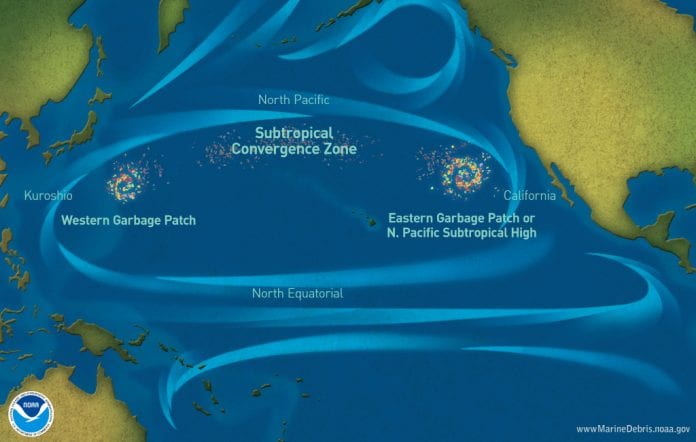A non-profit Dutch system designed to remove tons of plastic debris from the world’s oceans, has been launched and begun a test run, according to founders of The Ocean Cleanup.
The Ocean Cleanup system was headed in mid-September to a location 240 nautical miles offshore for a two-week trial run before continuing toward the massive pile of floating garbage in what is known as the Great Pacific Garbage Patch, estimated to contain 1.8 trillion pieces of plastic and covering an area twice the size of Texas. The debris patch, some 1,200 nautical miles offshore, is between California and Hawaii.
The system was being towed from San Francisco Bay by the Maersk Launcher, made available for the project by A.P. Moller-Maersk and DeepGreen, its current charter holder.
“As a responsible maritime operator, we are committed to ensuring that the oceans remain a healthy environment for generations to come,” said Claus V. Hemmingsen, vice chief operating officer of A.P. Moller-Maersk and chief executive officer of the firm’s energy division. “We are therefore very pleased to contribute with services and equipment to The Ocean Cleanup.”
Bryan Slat, founder and chief executive officer of The Ocean Cleanup, expressed gratitude for support from people around the world that have allowed his non-profit to develop, test and launch a system with potential to begin mitigating this ecological disaster.
“This makes me confident that, if we manage to make the technology work, the cleanup will happen,” he said.
Once successful, and if funding is available, The Ocean Cleanup aims to scale up a fleet of some 60 systems focused on the Great Pacific Garbage Patch over the next two years.
The system, is propelled by wind and waves, is designed to move faster than the plastic, and allow the plastic to be scooped up like a giant Pac Man machine.
The Ocean Cleanup projects that the full fleet can remove half of the plastic in the Great Pacific Garbage Patch within five years. Their ultimate goal is to reduce the amount of plastic in five of the world’s oceans, for a plastic free ocean by 2050.











